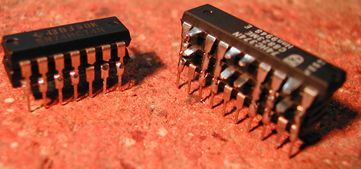We’ve seen some crazy music production stations over the years. But this synthesizer system may just take the cake. Starship One is the creation of [Marc Brasse]. At first glance, this music battle station looks like it belongs on the bridge of the Enterprise. The resemblance is not entirely unintentional. [Marc] himself says “Commander Data from Star Trek: The Next Generation might actually (have) like(d) it if he did not have such a conservative taste in music.”
At the core of Starship One are two underappreciated synths from the 90’s. The Technics WSA1, and a Gem S3 turbo. Both were keyboards ahead of their time. The WSA1 is a modeling synth, a sound generation trend in the ’90s which sounded great, but never quite caught on. The other strike against it was that it was built by Technics, who had a reputation for building HiFi equipment and home keyboards. Professionals just didn’t pick it up.
The Gem S3 had a similar story — built by a company called General Music, the keyboard was a great design with incredible piano action, but never quite made it. [Marc] wasn’t turned off by the lineage of these two synths. In fact, he embraced them. [Marc] explains more about his philosophy in creating the Starship One in this PDF document.
[Marc] combined these two instruments with Fatar MP1 bass pedals, a ribbon controller, and more additional components than we could ever hope to name here. The frame of the synth is built from a discarded retail CD sales rack. Extruded aluminum pieces came from a sun slat curtain. Just about every part was reused to build one beast of a workstation.
If you’re wondering what the strange keyboard layout is, it’s a Janko keyboard adapter [Marc] custom made. Instead of 88 notes, there are 264 keys, arranged so that every chord has the same fingering, regardless of the scale being played.
Want more modulation? Check out this ARM based FM synth, or this monster post of open source synths!







 [EvilTim] first designed a circuit using discrete ’74 series logic which would convert the LCD drive signals to SCART RGB. Of note is the construction technique used in this circuit. A tower of three 74HC374 chips allows [EvilTim] to create R, G, and B outputs without the need for a complex circuit board.
[EvilTim] first designed a circuit using discrete ’74 series logic which would convert the LCD drive signals to SCART RGB. Of note is the construction technique used in this circuit. A tower of three 74HC374 chips allows [EvilTim] to create R, G, and B outputs without the need for a complex circuit board.









